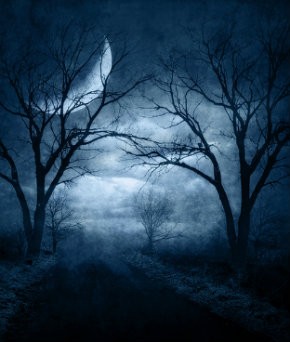Into the darkness
Halloween draws near. The holiday began in Christian tradition as a time to ponder death and the recently departed. Though we do not always take it so seriously today, Halloween’s tradition of ghouls, witches and other shadowy characters makes it as good a time as any to think on the reality of evil, sin and death that besets us.
For Christians, the darkness of Halloween or any other sort of darkness is never the final and ultimate word—that is reserved for resurrection light and the eventual triumph of Christ’s grace in the renewal of all creation. But for Christians, as for all sufferers, darkness is real. The twin dangers of our age are sentimentally denying darkness or slipping into an utterly godless nihilism, being consumed by darkness and nothing but darkness. For people of faith, the danger of sentimentally denying, avoiding or rushing away from darkness is the most pressing of these two temptations.
Read our latest issue or browse back issues.
Few modern Christian artists were more acutely aware of the pitfalls of sentimentality than Flannery O’Connor. She complained, “Today’s reader, if he believes in grace at all, sees it as something which can be separated from nature and served to him raw as Instant Uplift.” This is cheapened and sentimentalized grace, grace removed from and denying all darkness and struggle in life.
Sentimentality, and Christian sentimentality in particular, was acutely diagnosed by O’Connor. She called sentimentality “an excess, a distortion of sentiment usually in the direction of an overemphasis on innocence,” on sweetness and light exclusively. It is forgetting, as the apostle Paul wrote, that we dwell in “this present darkness” (Eph. 6:12) and “work out [our] salvation with fear and trembling” (Phil. 2:12).
As O’Connor put it, “We lost our innocence in the Fall, and our return to it is through the Redemption which was brought about by Christ’s death and by our slow participation in it. Sentimentality is a skipping of this process in its concrete reality and an early arrival at a mock state of innocence.”
An advantage of the symbol of the crucifix over that of the empty cross is that it persistently reminds us that we are baptized into Christ’s death and that he—with us—suffers still the groaning of a broken creation for its final and full redemption. On the cross, Christ dwelled in darkness and knew the abandonment of God. On the cross, Christ was made to taste the bitterness of sin that haunts and will haunt us until we are at last made whole in consummated redemption.
So we are called to a “slow participation” in Christ’s redeeming death and should be careful not to remove Christ from the cross too anxiously, too quickly and easily. Where injustice bears down and oppresses, there Christ suffers alongside on the cross. Where illness and death threaten, there Christ suffers alongside on the cross. Where mental anguish rages and leaves its victim desperate and despairing, there Christ suffers alongside on the cross. In short, Christ not only ultimately eliminates our darkness but knows firsthand the darkness that can engulf us, and there patiently, tenaciously abides with us. The Christ of the crucifix is an embodiment of the fact that Christ does not skip the long and sometimes grueling process of redemption “in its concrete reality” and rush us to an “early arrival at a mock state of innocence.”
Meditation on Christ’s Passion is preeminent means for the proper Christian facing of darkness. But there are of course many other scriptural resources. One of the most striking is Psalm 88, a prayer for help in desperation that famously does not end—as do most other such Psalms—with relief and cessation of despair. O’Connor said, “Often the nature of grace can be made plain only by describing its absence.” Psalm 88 is an agonized rumination on such an experience. The Psalmist, with a soul “full of troubles,” cries out in the insomniac night. “I am counted among those who go down to the Pit; I am like those who have no help, like those forsaken among the dead . . . like those whom you remember no more, for they are cut off from your hand.”
Worse yet, the Psalmist is left utterly lonely, shunned by “friend and neighbor,” and to his companions he has become “a thing of horror.” In this state he queries whether or not God’s “steadfast love” is “declared in the grave” and moans, “Are your wonders known in the darkness?”
The nonsentimental testimony of the Psalm is that God’s wonders are indeed known in the darkness, and not simply in the light. The Christian, like and with Christ, goes through darkness to the light, not around all darkness to dwell in constant (and ersatz) light. Only by such “slow participation” are we, and the world with us, saved.





